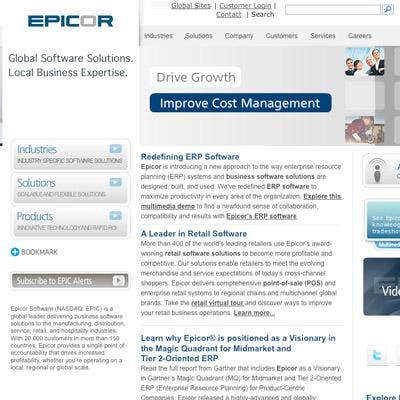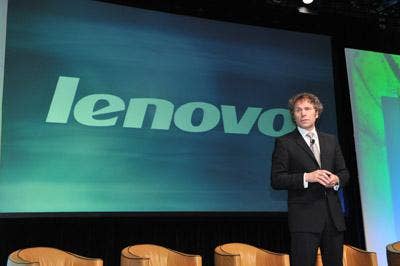10 Applications The Midmarket Needs Right Now

At some point as companies grow they realize they can no longer run on spreadsheets and other desktop applications they relied on when they were two guys in a garage or a handful of employees in a tiny office suite. But for midsize companies with dozens or hundreds of employees, enterprise-class applications such as SAP Business Suite are overkill.
Here's our take on what we see as some of the leading business applications for mid-market businesses -- including ERP, CRM and business intelligence software -- and the solution providers who serve them.

Autodesk Inventor
Ponderosa Roasting used it to design better coffee roasting machines. Springboard Biodiesel used it to design its clean-technology systems. And Nimrod Racing used it to design its customized, radio-controlled racing cars. All used Autodesk Inventor, a set of 3D mechanical design, product simulation and design communication software tools that small and midsize manufacturers can use to design, visualize and simulate their products.
Last month Autodesk launched its 2011 release of Inventor with enhanced 3D design and visualization capabilities and an improved user interface for easier navigation.

Epicor ERP
While many think of ERP applications as something only humongous companies need (or can afford), midmarket businesses need many of the same capabilities as their big company brethren. Epicor specifically designs its ERP application set for midmarket and "Tier 2" businesses.
In March Epicor delivered release 9.05 of its ERP application suite with new capabilities centered on cost reduction, process improvement and customer responsiveness -- all top priorities for midsize businesses trying to position themselves for the economic recovery, according to a recent Forrester Research survey of small and midsize business in North America and Europe. The new release, for example, offers new accounting and performance management tools such as key performance indicators and new project management features.

IBM Cognos Express
An IBM survey of CIOs in 2009 found that 83 percent of midmarket IT executives ranked business intelligence and analytics as their top priority for improving competitiveness and cutting costs. IBM answered that need with IBM Cognos Express, an application package combining business intelligence and analysis tools with financial planning software. The package incorporates much of the technology from the enterprise-class Cognos business intelligence system IBM acquired in January 2008 but tailors it for midmarket businesses with between 100 and 1,000 employees.

Intacct
Intacct targets SMBs (businesses with 25 to 1,000 employees) with its on-demand financial management and accounting applications. The company is going after the same customers as more established vendors such as Intuit and Sage -- businesses that have outgrown spreadsheets for managing their company's finances. The vendor's most recent release, Intacct Winter 2010, offered an enhanced multi-dimensional general ledger and a new revenue management application. Intacct launched a channel program two years ago and partners already account for about half of the vendor's new business.

Intuit QuickBooks Enterprise Solutions
Intuit QuickBooks Enterprise Solutions is the backbone financial management system for more than 70,000 SMBs. The software offers an all-in-one package of accounting and financial, purchasing, inventory, sales and payroll management applications. Version 10.0 of the software, which debuted in late 2009, offers improved business reporting, integrated document management, and the ability to create custom, single-screen "snapshot" views of the financial data most important to a business.

Microsoft Dynamics
While Oracle and SAP were battling it out for enterprise customers in the ERP application market, Microsoft was setting its sites on the midmarket by acquiring four ERP software developers (Axapta, Great Plains, Navision and Solomon IV). Those products are all now sold under the Microsoft Dynamics banner with the Great Plains (renamed Dynamics GP) and Navision (Dynamics NAV) most geared for mid-market customers.
While Microsoft once considered merging all four applications into one under "Project Green," the vendor backed off that idea and instead has been developing a common interface and other shared capabilities between the apps while keeping them separate. Demands from the approximately 10,000 solution providers who resell the Dynamics products were a likely factor in that decision.
Dynamics CRM, which comes in both on-premise and on-demand versions, has been steadily gaining market share. But there's no word if or when Microsoft may begin offering Software-as-a-Service versions of its ERP apps.

NetSuite OneWorld
While Microsoft hasn't waded into the on-demand ERP software pool yet, NetSuite says Software-as-a-Service is the only way to offer ERP applications. Not every midsize business shopping for ERP applications wants to implement them on-premise and that's why NetSuite is finding success with its on-demand ERP, CRM and E-commerce applications.
NetSuite also knows that today's midsize companies may be just as likely to have operations around the world as a multinational conglomerate -- hence the vendor's NetSuite OneWorld system that adds global business management and financial consolidation capabilities to the company's ERP applications. Currency translations and international taxation rules? They're not just for Fortune 500 companies anymore.

Sage SalesLogix
While Sage offers several CRM applications (including Sage CRM and Act!), SalesLogix is seen as the company's flagship CRM product with which it goes to battle in the midmarket against Microsoft, Salesforce.com and others.
While SalesLogix has been an on-premise application until now, Sage is taking steps to develop SalesLogix as a cloud-computing service under a timetable announced in September. This month the company made good on that promise by debuting SalesLogix E-marketing, an on-demand e-mail marketing campaign service that works with the on-premise application. That's the first of a series of cloud computing services Sage is building around SalesLogix to support sales, marketing, database management and e-commerce business processes for midsize companies.

SAP Business All-in-One
Most midsized companies aren't up for installing and integrating a plethora of ERP applications. That's the beauty of SAP's Business All-in-One, a single package of financial, human resource, procurement, inventory, manufacturing, CRM, logistics, product development and corporate services capabilities. Business All-in-One is based on the vendor's enterprise-class SAP Business Suite applications, but pre-integrated for midsize businesses with fewer than 2,500 employees and annual revenue of $1.5 billion or less. That makes it a popular product among SAP channel partners.

SAP BusinessObjects Edge Solutions
In tight economic times businesses need better visibility into their operations, their spending, their sales. That means implementing a business intelligence system. SAP BusinessObjects Edge BI, based on the Business Objects business intelligence software SAP acquired in early 2008, combines business intelligence and performance management in a single package that's sold through SAP's channel partners. Add-on options include data integration and data management tools.
Also available: SAP BusinessObjects Edge Planning and Consolidation for budgeting, planning and financial forecasting; and BusinessObjects Edge Strategy Management ties performance metrics to initiatives, plans and operational activities.